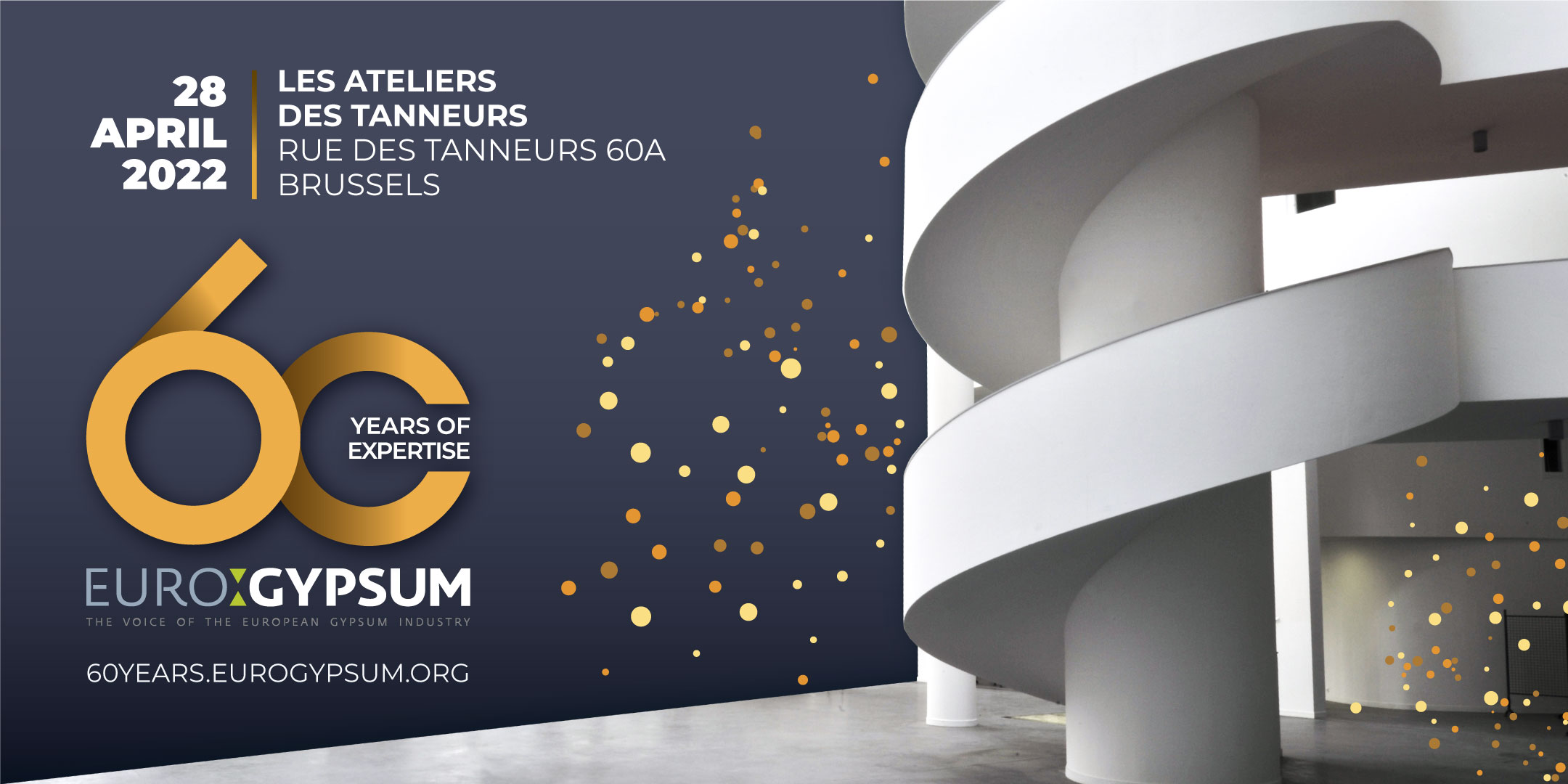On this page you will find recordings and main takeaways from the event.
Gypsum is a versatile mineral, perfectly suited to both old and modern buildings, as illustrated by the new EG60 Guide. At the intersection of construction and art, gypsum enables well-being and creativity. It is also eternally recyclable.
As highlighted by Director Gwenole Cozigou (European Commission, DG GROW), Europe is facing major political and societal challenges, on climate, sustainability and circularity, material supply issues and inflationary pressure in a tense geopolitical context. Buildings are affected by these challenges but can also address them.
Joint efforts are needed for the construction ecosystem to make this transition. Initiatives such as the revision of the Construction Products Regulation and the Sustainable Product Initiative, the Level(s) framework, the rollout of the Circular Economy Action Plan, actions in the fields of digitalisation and skills will play their part towards this endeavour.
We must act collectively, and we must act now. The gypsum sector is well equipped to support policymakers and societies with sustainable and affordable solutions. We have materials and systems to improve buildings’ energy efficiency, safety and comfort, while optimising the use of resources in a circular economy.
At the Congress, participants discussed the newest developments, challenges and opportunities for the responsible supply of raw materials. They also discussed aspects of promoting circularity, climate neutrality and sustainable products and buildings. Innovation and digitisation can play a major part in achieving these objectives.
Cooperation and dialogue with policymakers, communities, environmental organisations, younger generations, as well as other industrial actors, are key to success. Introducing the evening panel debate, former European Commissioner Janez Potočnik insisted on the need to change our societal paradigm to using natural resources and introduced the concept of sufficiency.
Potočnik demonstrated the need to go beyond energy efficiency and properly address the use of resources when building Europe, to have a fully sustainable approach.
Josefina Lindblom from the European Commission’s DG Environment referred to initiatives accelerating this transition, by facilitating sustainable and circular practices in construction, as well as the communication and integration of environmental product information.
Adrian Joyce from EuroACE and Eurogypsum’s Tristan Suffys mentioned examples of new trends in construction and possible actions to improve sustainable construction.
Eurogypsum’s new President Jörg Ertle concluded the event, stressing the European gypsum industry’s openness to dialogue and partnership with institutions and all stakeholders to achieve the objectives of the European Green Deal together.

